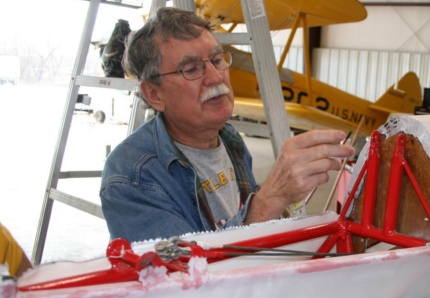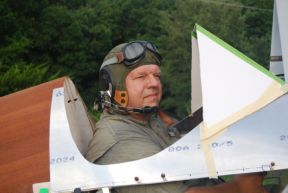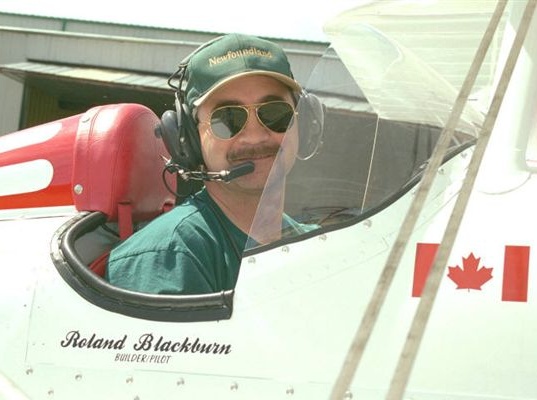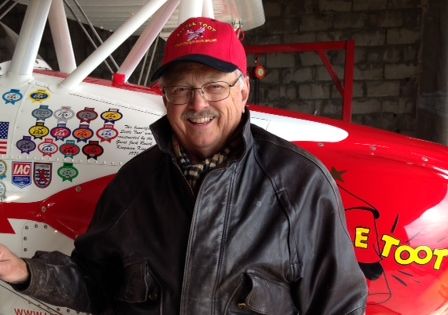Airplanes and flying have been my great passion for all of my life. As a kid I built and flew RC airplanes with my father, an activity that I am still very much involved in to the present day. This hobby is what led my to discover the Little Toot. I stumbled upon an article in a modeling publication (can't remember which one) and spotted a most wonderful looking biplane, the Little Toot. The pictures are still etched in my memory. The article included contact info for more information and I therefore wrote to Tommy Meyer. A few weeks later, I received a two page black and white brochure in a letter sized envelope. Over the next few years I must have read that brochure a thousand times. I stared a the pictures, trying to make out details of the construction wondering if I could actually build such a beautiful airplane. Over the span of the next ten years I'd made a few calls to Tommy, asking questions and inquiring about any projects that might be fore sale. Then in 1992, I bit the bullet and bought a project located in Bend, Oregon. This was the beginning of the great adventure.
In 1993, I began work in ernest. Unlike some builders, I had never built a "real" airplane. I had to learn EVERYTHING. There was much doubt and many nights of frustration. My family expressed their doubts as to whether I could actually do this. To build, finish and actually fly an airplane you built yourself!?? Not to mention the financial aspect especially for a man with a young family. I never admitted it at the time but I had my doubts too. I also felt guilty that the money going into the airplane could be better spent on the needs of a young family. During the building years, my wife Lorraine supported me and encouraged me to keep going, making sacrifices for the project so that I could pursue MY dream. I could not have completed the project without her unwavering support.
Finally, on May 11, 2000, test pilot Jack Johnson flew my airplane for the first time. It few hands off and without a hitch. Not a thing needed tweaking, she was perfect. This event was shared by my father Roger, my brother Dan, the Transport Canada inspector and few of my flying buddies. My first flight was not until a few days later and for me was uneventful. I found the airplane to be easy to fly and behaved completely as you would expect. Over the years, C-FZRP has proven to be an honest, predictable and dependable airplane. I have since accumulated over 506 hours and have flown as far away as Oshkosh, but most flights are local and usually where a hearty breakfast awaits.
I am a commercially licensed pilot and have done a lot of glider towing in Piper Pawnees and some crop dusting in a Cessna Ag Truck. My brother and father fly ultralights, a pastime which I also enjoy. I am an avid modeler with a modest collection from small electrics up to 1/3 scale examples. Currently, I am building a 1/4 Waco ATO. I am also currently building a 7/8 scale WWI SE5a witch will be powered by a Continental O-200.
In my personal life, I have been married 29 years to my wife Lorraine, I have tow daughters Chantal (24) and Danielle (21) and a son in law Peter, Chantal's husband. Professionally, I am an electrical contractor and our company (Jet Electric Ltd.) will be celebrating 25 years of service in Jan. of 2014. I am 53.
In closing, I consider this airplane to be a member of the family. It is not for sale and will never be. I will continue flying it until I wear it out or can't get into it any more, witch ever comes first.
Roland Blackburn, President & General Manager, Jet Electric Ltd.






















